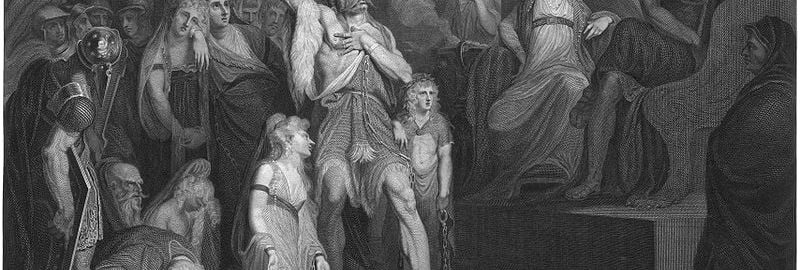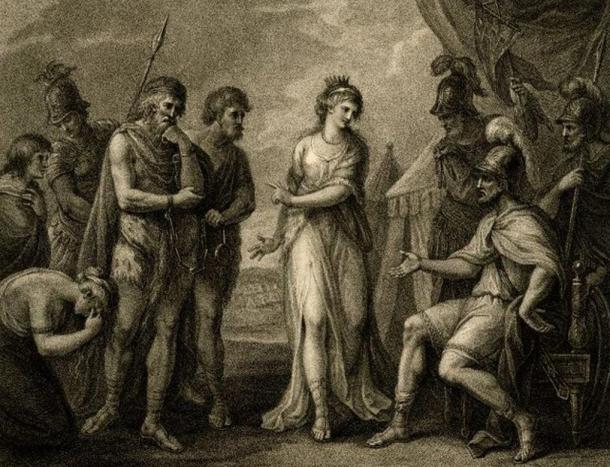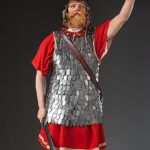Chapters
Caratacus was the king and leader of the Catuvellauni tribe – one of the most powerful tribes in Britain. He was the son of a Celtic king named Cunobeline and ruled alone from 43-50 CE. When other tribes of Britain went to the side of the Romans or recognized their supremacy, Caratacus fought for freedom by organizing a confederation of the tribes of Britain against the Romans.
Cassius Dio mentions him as the son of King Katuwelaunus of Cunobelinus. After his death, the king’s brother Epaticcus took power over the tribe and extended the country to the west at the expense of the Atrebates.
Invasion of the Romans
Before the invasion of the Romans in 43 CE, Caratacus had greatly expanded its territories. In about 35 CE, when Epaticcus, the king of Atrebates – Verica, died, he launched counterattacks to recover the lost lands. However, as the sources indicate, Caratacus finally completed its conquest to the west of the kingdom and forced Verica to flee to Rome. There the king sought the support of the Romans. Emperor Claudius wanted to legitimize his rule after the death of Caligula and conquering Britain would be a great way to do so. To this end, he organized an expedition (the main commander was Aulus Plautius, leading 4 legions – about 40,000 soldiers) in the summer of 43 CE, which officially restoration the king of Verica to the throne.
The most important target of the Roman offensive was the fortress Camulodunon (now Colchester), the capital of the Katuwelaunas. Caratacus, along with his brother Togodumnus, commanded the defence of the country, using mainly guerrilla warfare and avoiding open clashes. Ultimately, however, there were two battles: on the River Medway and the Thames, as a result of which the Romans captured the south-eastern areas and Togodumnus was killed. Moreover, in the following days the capital of Camulodunon was captured, a centre that turned into the first Roman colony in Britain – Colonia Victricensis.
Resistance against the Romans
According to Tacitus, Caratacus, after the defeat of his tribe, went to the area of present-day Wales, where he commanded the tribes: Silures and Ordovices. His main rival was the newly appointed governor of Britain – Publius Ostorius Scapula – who defeated him at the Battle of the River Severn and several other clashes in 51 CE. At that time, Caratacus’ wife was taken prisoner, when he himself fled and fled north to the land of the Brigant tribe (now Yorkshire). There, Queen Kartimandua decided to hand him over to Rome. The rest of her tribesmen did not like this, and this act significantly weakened her popularity. For this sign of loyalty, however, she received a sumptuous reward from the Romans and a promise of armed help against any enemies.
Fall
Caratacus was handed over to the Romans in chains. Then he was taken to Rome, where he was to take part in the emperor’s triumphal procession. After taking part in the triumph, Emperor Claudius agreed to make Caratacus appear before the senators and prove why he should not be executed. The Roman historian Tacitus recalls his speech in which he stated that his fierce resistance made Rome’s glory even greater. Caratacus caused such admiration with his fiery speech that it was agreed to release him. He was to spend the rest of his life in Rome with his family. According to Cassius Dio, Caratacus, already a free man, was so shocked by the enormity of Rome that he stated:
And can you, then, who have got such possessions and so many of them, covet our poor tents?
– Cassius Dio, Roman history, LXI.33
Roman sources are unanimous on the person of Caratacus. He was shown to be a brave and bold man in making decisions. His character is associated with many legends, and he himself embodies the model of a hero who puts up constant and fierce resistance to the invaders.








